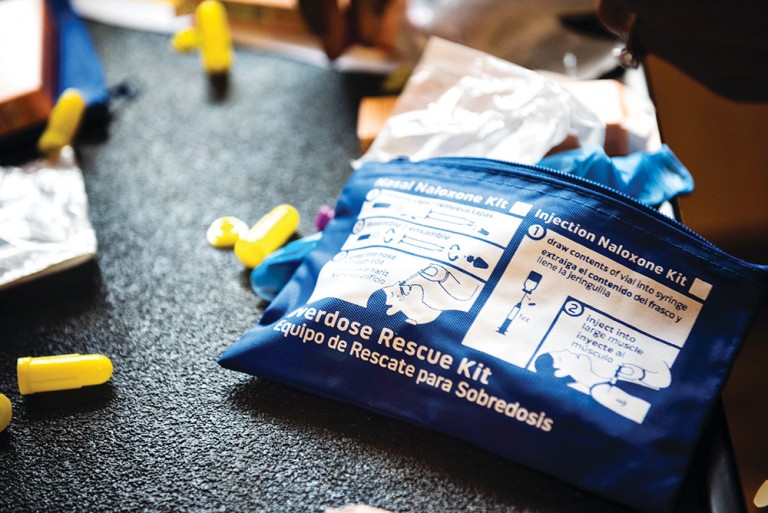By Forum Staff
Mayor Eric Adams on Wednesday announced the lowest quarter in five years for opioid overdose deaths in the city and new investments to drive opioid overdoses even further down.
New provisional data show that 498 people across Gotham died from an overdose in the third quarter of 2024 — the lowest number of overdose deaths in a single quarter since 2020. In 2023, the Big Apple saw a slight decline for the first time since 2018 when 3,046 people died of an overdose.
Additionally, Adams announced contracts with nine treatment providers to increase access to medications for opioid use disorder, including methadone and buprenorphine, to further drive down opioid overdoses and deaths. A total of $4 million in annual funding across all contracts will help recipients improve their existing practices and shift towards a low-threshold model of care to serve people at greatest risk of experiencing an opioid overdose. Each awardee will tailor their services to support their community’s needs, using a model of care focused on same-day treatment entry and medication provision, flexibility, and wide availability across settings.
The contracts being announced today further the city’s ongoing commitment to supporting New Yorkers in their journeys to stability and recovery and reducing overdose deaths by 25 percent by 2030 as part of “HealthyNYC,” the Adams administration’s plan to improve and extend the average lifespan of all New Yorkers. Methadone and buprenorphine have been demonstrated to reduce the risk of overdose death by more than 50 percent. Traditionally, delivery of medications for opioid-use disorder have included strict requirements for treatment entry and continuation, increasing barriers to care for people with opioid use disorder. In addition to funding programs to implement low-threshold access to these medications, the City Department of Health and Mental Hygiene will also facilitate trainings and provide technical assistance to awardees, allowing organizations to focus on providing high-quality, individualized care.
This funding will also support programs that help build bridges across health care and social service systems to strengthen the continuum of care for people with opioid use disorder. Funded programs will conduct engagement and offer services in locations where people with opioid use disorder spend time, which may include non-traditional settings such as shelters, supportive housing programs, and syringe service programs.
In January 2018, the City sued manufacturers and distributors of prescription opioids to remedy the harms caused within the city by the misleading marketing and improper distribution of these drugs. State Attorney General Tish James filed a similar lawsuit in March 2019. Settlements reached by both the city and the state, as well as a court victory by James, have provided the city with over $154 million to date, which is expected to grow to a total of more than $500 million by 2040. In June 2022, Adams and James announced allocations for the first of hundreds of millions of dollars coming to New York City to combat the opioid crisis. In September 2024, Adams announced City funding will ramp up to an annual $50 million for opioid prevention and treatment.

